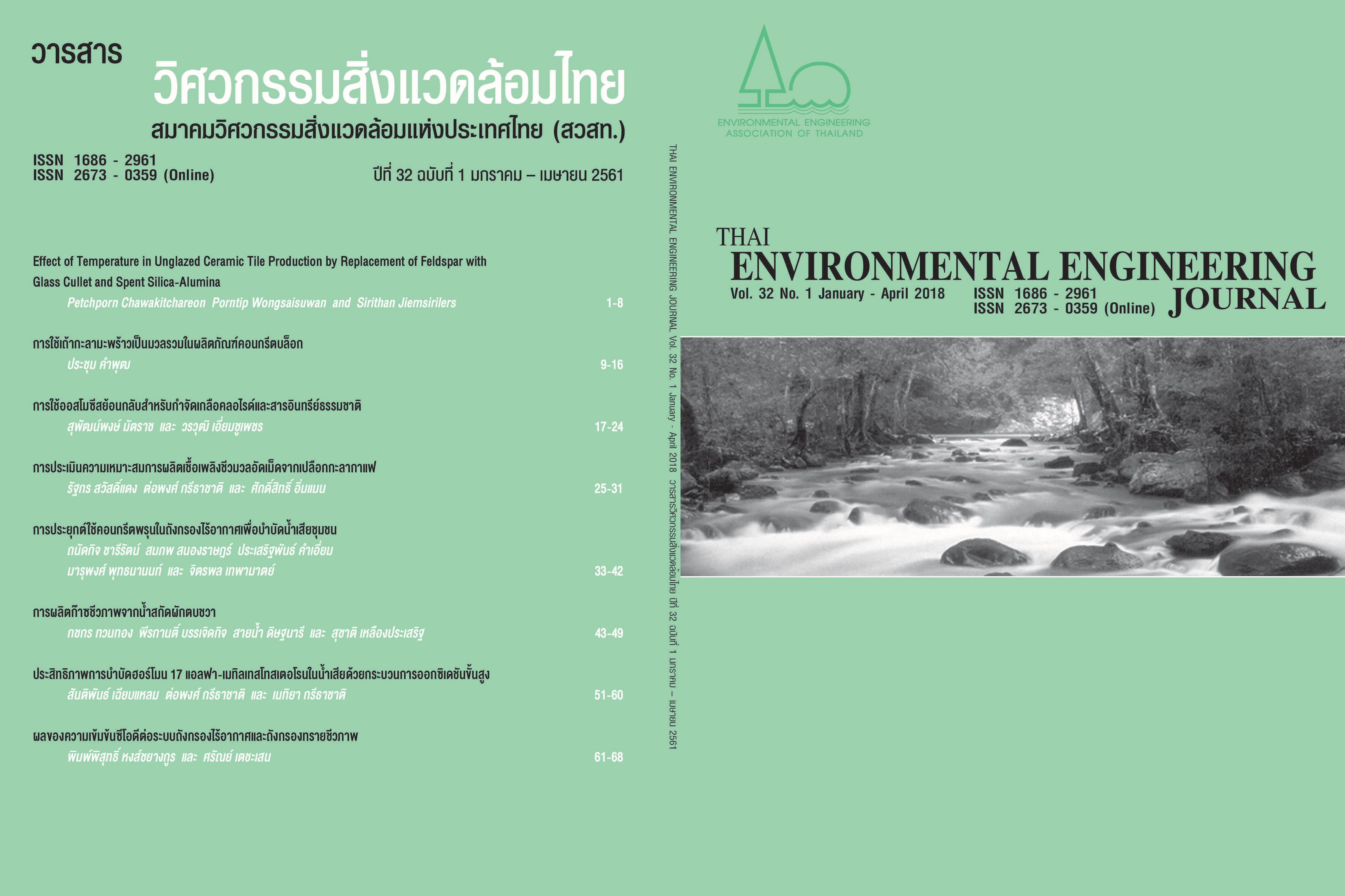Effects of COD concentrations to Anaerobic Filter and Sand Biofilter Systems
Main Article Content
Abstract
This research studied the effect of COD concentrations to the anaerobic filter/aerobic sand biofilter system. Anaerobic filter consisted of 4 tanks in series, each tank had retention time of 0.5 day, total retention time of 2 days. Aerobic sand biofilter contained 0.60 m. medium sand with air ventilation pipe in the bottom in order to filter solids from anaerobic tanks and remove odorous gas with air in sand layer. Synthetic wastewater was prepared from sucrose at 1,000 and 1,500 mg-COD/l, and flowed constantly to reactors at 31.2 liter per day. Results found that the system became stable after 45 days. Total COD removal efficiencies were about 94-98%. Anaerobic filters and sand biofilter had efficiencies of 70-91% and 7%, respectively, in both influent concentrations. Efficiencies of anaerobic filters having retention time of 0.5, 1, 1.5, and 2 days were similar, suggesting that most COD removal in anaerobic process were occurred in the first 0.5-day retention time tank, accounted for 70%. Results showed that sand biofilter could treat wastewater from anaerobic filter and also removed suspended solids with low maintenance and low cost.
Article Details
References
[2] Metcalf and Eddy. Inc., Tchobanoglous, G., and Stensel, H.D. Wastewater Engineering: Treatment and resource recovery. 5thed. Singapore: McGraw-Hill Book Company. 2014.
[3] Tanthunwet, M. Academic Guide for Anaerobic Wastewater Treatment Systems. 1sted. Bangkok: Chula Unisearch. 2003. (in Thai)
[4] Daniele, T., Adriano, L.T., Bruno, C.F., Daniel A. and Camargo, B. 2015. Wastewater treatment by anaerobic filter and sand filter: Hydraulic loading rates for removing organic matter, phosphorus, pathogens and nitrogen in tropical countries. ECOL ENG. 82: 583-589.
[5] Metcalf and Eddy. Inc., Tchobanoglous, G., and Stensel, H.D. Wastewater Engineering: Treatment and resource recovery. 5thed. Singapore: McGraw-Hill Book Company. 2014.
[6] Aqua Nishihara. Plastic Media [online]. 2011. Available from: https://issuu.com/choompornjantamas/docs/aquacatalog [2019 February 10] (in Thai)
[7] Karot, T. Wastewater Engineering: Biological Treatment. 1sted. Bangkok: CUPrint. 1996. (in Thai)
[8] Chavalparit, O. Wastewater Analysis Techniques for Wastewater laboratory. Bangkok: CUPrint. 2013. (in Thai)
[9] Pollution Control Department. Water quality standard [online]. 2005. Available from: http://www.pcd.go.th/info_serv/reg_std_water04.html [2019, February 10] (in Thai)


